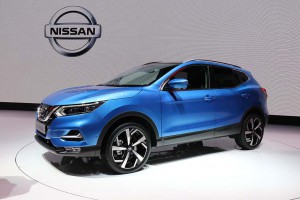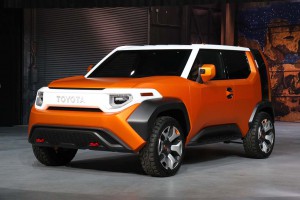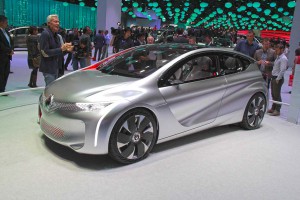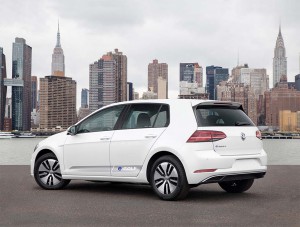
The Nissan Qashqai is getting a new look for Europe - and a new badge, the Rogue Sport - for the U.S.
In recent years, it’s been a three-way race to see which automaker would take the global sales and production lead, with Volkswagen pulling off an upset last year, toppling Toyota, while long-time leader has continued to lose momentum.
But there’s a pair of dark horses in the race and both hail from France, of all places. One, the Renault-Nissan Alliance, is already making its move, while the PSA Group, until recently considered an industry basket case, is also making its move.
About the only thing certain is that General Motors seems out of the running and comfortable slipping down the charts as it abandons its long-troubled European sales subsidiary. Beyond that, the race for leadership could be a real cliffhanger over the next several years.
Toyota has dominated the sales and production charts for the last decade, only ceding leadership twice. In 2011, GM regained the global title it held for three-quarters of a century – but only briefly as a result of the devastating earthquake and tsunami that all but shut down the Japanese auto industry.
Last year, Volkswagen nudged past Toyota, gaining the industry sales crown two years ahead of the 2018 target it had set for itself. But VW has been losing momentum in recent months, and preliminary figures show Toyota is back in the lead.
Global sales numbers have yet to be calculated for the first quarter of 2017, but based on production, the Japanese giant is back on top, its vast worldwide assembly network rolling out 2,707,251 cars, trucks and crossovers. By comparison, VW built just 2,495,100 vehicles during the January-through-March quarter, according to the International Organization of Motor Vehicle Manufacturers – known by its French acronym, OICA.
The 1Q data did reveal some surprises, most notably the fact that VW was topped not only by Toyota but also by the Renault-Nissan Alliance which rolled out 2,658,019 vehicles during the first quarter.
The Franco-Japanese partnership has been gaining ground for a number of reasons, including strong sales in the U.S. for the Nissan brand, as well as the rebound of the European market where Renault is a solid force. But the Alliance also added a third leg last year when Nissan acquired a controlling stake in struggling Mitsubishi.
Mitsubishi has been selling about 1 million vehicles a year, but Nissan CEO Hiroto Saikawa last month told Automotive News, “Easily they can grow to 1.5 million, hopefully, 2 million. Having a partner [that is] a 2 million company is much better than having [one that is] a 1 million company … My first wish is that they should start growing, rapidly, and they should regain ground in the U.S. as soon as possible.”
It wouldn’t take much from Mitsubishi alone to push the Renault-Nissan Alliance into the global top spot.
(Mitsubishi teams up with Renault-Nissan – but no merger in store, says Ghosn. Click Here to learn why.)
While the Alliance is moving up the chart, General Motors is sliding steadily downward. It did manage global sales of about 10 million vehicles in 2016, but that figure could drop precipitously this year. It’s not because of any catastrophic setback. GM isn’t planning a new wave of plant closures like it experienced during the Great Recession a decade ago. Rather, it last month sold off its Opel/Vauxhall subsidiary after failing to reverse nearly two decades of red ink.
(GM focusing on profitability rather than volume. Click Here to see how that strategy paid off in the first quarter.)
The question is when sales and production at the German-based unit will start being counted by new owner PSA Group, currently the 10th largest global automaker based on sales and production. That could happen sometime in 2017, though it will take several years for all the details of the sale to be completed.

Toyota has been shifting resources to the light truck segment with products and concepts like the FT-4X unveiled in New York.
At some point, however, PSA will get a big bump in its own numbers. Its various brands – including Peugeot, Citroen and DS – produced 3.146 million vehicles last year, so the Opel acquisition will nudge that closer to the 5 million mark. That could put PSA in position to challenge Fiat Chrysler Automobiles, even Honda, last year the globe’s seventh and eighth-largest makers.
(PSA planning return to the U.S. market. Click Here to see its 3-phase strategy.)
Korea’s Hyundai Motor Co., with its sibling Kia brand, also has been moving up the charts and is now in fifth place. With the Opel sale, the Korean carmaker could soon nudge past GM, especially if it follows through with plans to expand production in key markets including China, North America and Europe.
Hyundai would face a tough time challenging the industry’s big three, Toyota, Renault-Nissan and Volkswagen — especially when the updated VW Golf starts rolling into showrooms later this year — but what’s clear is that the long-stable global automotive hierarchy is now more in play than at any time in decades.


